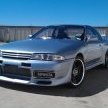Dyno Fright!
Announcements
-
Similar Content
-
Latest Posts
-
I think Fitmit had some, have a look on there (theyre Australian as well)
-
By soviet_merlin · Posted
Hah, fair enough! But if you learn with this one you can drive any other OEM manual. No modern luxury features like auto rev-matching or hillstart assist to give you a false sense of confidence. And a heavy car with not that much torque so it stalls easily. -
By soviet_merlin · Posted
Actually, I'd say all three are the automatic option. Just the different trim levels. The manual would be RSFS, no? -
By soviet_merlin · Posted
What Duncan said sounds right. Also, it looks like they only have the driver's mat. Not the rest. Because looking at the diagram: KG4911 is just the mat for the driver. KG4900 is the full set if I'm not mistaken and discontinued. But, it looks like they may still have the full set for the manual S2. Might be worth checking for the other models as well as they seem slightly different. https://www.amayama.com/en/genuine-catalogs/epc/nissan-japan/stagea/wgnc34/6649-rb25det/misc/G49 Man, I'm tempted.





Recommended Posts
Create an account or sign in to comment
You need to be a member in order to leave a comment
Create an account
Sign up for a new account in our community. It's easy!
Register a new accountSign in
Already have an account? Sign in here.
Sign In Now